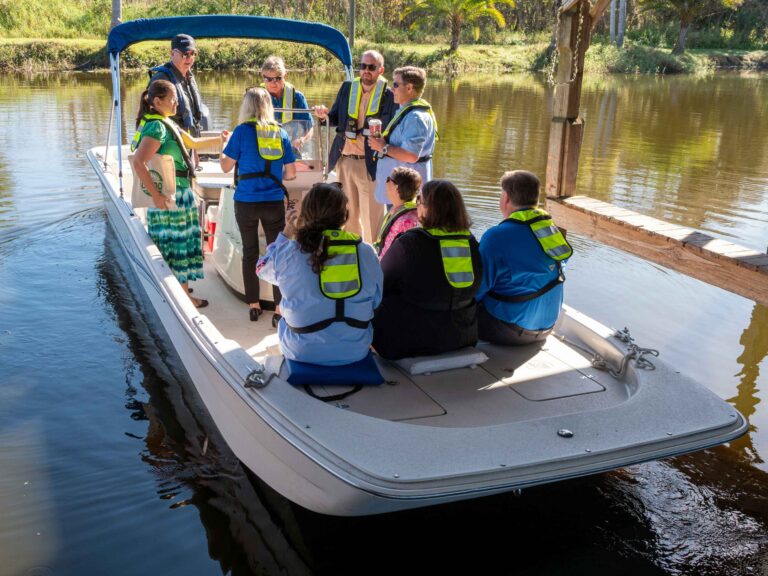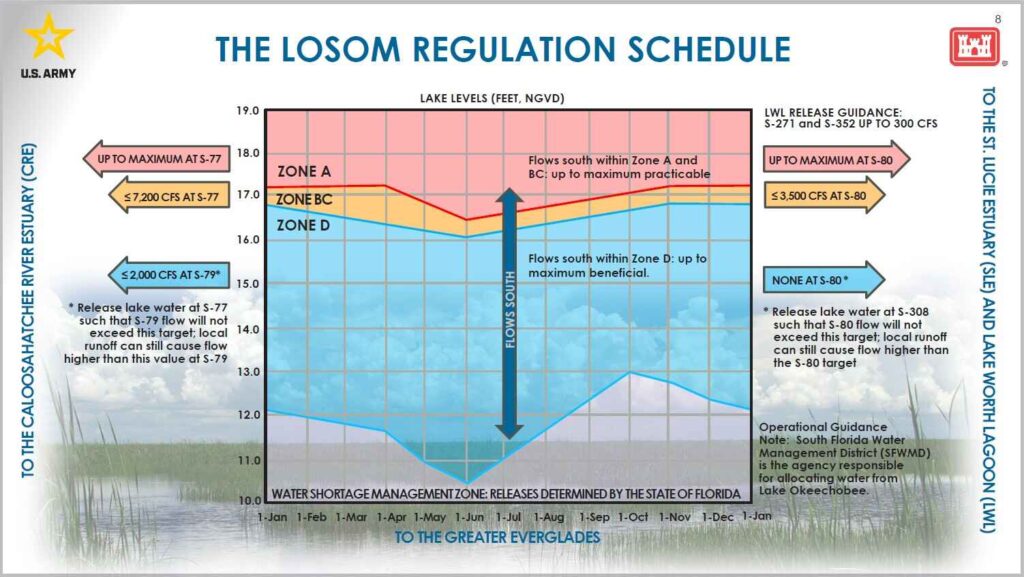By JESSICA MAILLIEZ
The Kings Bay Restoration Project in Crystal River stands as a beacon of resilient restoration, showcasing how dedicated efforts can revive and sustain a vital aquatic ecosystem. Pounded by recent hurricanes and tropical storms, this project has rebounded, proving how resilient mother nature really is when strategic nature-based restoration techniques are used.
Led by the non-profit organization Save Crystal River and aquatic restoration firm Sea & Shoreline, the project, initiated in 2015, began with a clear mission to combat the invasive Lyngbya algae and restore the bay’s natural ecosystem. Save Crystal River presented the Florida Legislature with a compelling case for action and the legislature responded with initial funding of $1.6 million for a pilot project. This funding marked the beginning of a comprehensive and adaptive restoration effort designed to withstand even the toughest environmental stressors.
The restoration project, which is still underway, follows a three-phase approach:
Remove Muck: Decades of accumulated detrital material, muck, and algae are removed from the riverbed through hydraulic vacuum dredging. This process not only removes excess legacy nutrients, but also unclogs hundreds of spring vents, creating increased freshwater flow and a healthier environment for aquatic life.
Replant Eelgrass: Once the muck is cleared, Sea & Shoreline biologists plant varieties of eelgrass which are crucial for the local ecosystem. These grasses provide oxygen, food and habitat for manatees, fish, crabs, and other marine life. They also stabilize the sediment, help to keep the water clean, create drag on wave energy during storms, and store carbon.
Maintain the Restoration Site: The work does not stop at planting. Regular monitoring and maintenance ensure the eelgrass thrives, with biologists monitoring and cleaning the protective cages around the plants until they sufficiently root and grow
By July 2023, the project had restored 92 acres of Kings Bay, with plans to restore an additional 85 acres in subsequent phases. The efforts have led to the removal of more than 500 million pounds of Lyngbya and detrital material, the opening of more than 850 spring vents, and the planting of more than 500,000 native eelgrass units.
The success of the Kings Bay Restoration Project is a testament to the power of community involvement and legislative support. Local businesses, residents, volunteers, and the legislature have all played a crucial role in the project’s progress. Educational outreach programs have raised awareness about the importance of preserving this precious ecosystem, and consistent funding from the Florida Legislature has enabled the project to reset the ecosystem and provide a significant return on investment through enhanced tourism, property values, sales tax receipts, fishing opportunities, and more.
On Aug. 31, 2023, just two months after successfully restoring 92 acres in Kings Bay, Hurricane Idalia made landfall in Florida’s Big Bend region. Crystal River experienced a 9-foot storm surge, leaving saltwater lingering in the freshwater system for days. This intrusion appeared catastrophic, with Kings Bay suffering a nearly 90 percent loss of its precious eelgrass beds.
Sea & Shoreline biologists have monitored more than 300 points within Kings Bay in the last year. The most recent findings are nothing short of amazing. Since assessing Hurricane Idalia’s initial impacts in late September 2023, Kings Bay has seen a near 67 percent increase in eelgrass survival to date with that percent increasing weekly. The monitoring results demonstrate that the Kings Bay Restoration Project can serve as a model for resilient habitat restoration throughout the state.

The journey of restoration is marked by both challenges and triumphs. The Kings Bay Restoration Project continues to evolve, with ongoing efforts to protect and enhance the bay’s natural beauty and biodiversity. The project’s success serves as a model for similar initiatives across Florida and beyond, demonstrating the positive impact of dedicated environmental stewardship.
Jessica Mailliez is Senior Environmental Manager, Sea & Shoreline
























